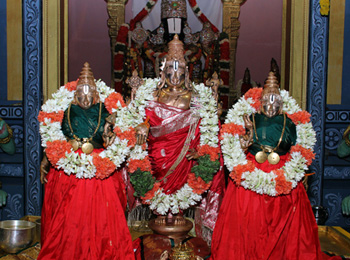Events
- Monday 1st Aug 2016
Sawan Shivaratri Shravan Somwar Vrat North
Nishita Kaal Puja Time = 24:11+ to 24:55+
Duration = 0 Hours 43 Mins
On 2nd, Sawan Shivaratri Parana Time = After 06:01
Ratri First Prahar Puja Time = 19:04 to 21:49
Ratri Second Prahar Puja Time = 21:49 to 24:33+
Ratri Third Prahar Puja Time = 24:33+ to 27:17+
Ratri Fourth Prahar Puja Time = 27:17+ to 30:01+
Chaturdashi Tithi Begins = 04:42 on 1/Aug/2016
Chaturdashi Tithi Ends = 03:14 on 2/Aug/2016Sawan
Shivaratri 2016
Chaturdashi Tithi during Krishna Paksha is observed as Masik Shivaratri or Masa Shivaratri and staunch devotees of Lord Shiva observe fast and worship Shiva Linga on all Shivaratris in the year. In a year there are usually twelve Shivaratri days.
Shivaratri which falls during Shravana month is known as Sawan Shivaratri. As whole Shravana month is dedicated to perform Shiva Puja, Masa Shivaratri during Sawan month is considered highly auspicious. However, the most significant Shivaratri which is known as Maha Shivaratri falls during February or March which corresponds to Phalguna month according to North Indian calendar.
Famous Shiva temples in North India, Kashi Vishwanath and Badrinath Dham arrange special Pujas and Shiva Darshan during Sawan month. Thousands of Shiva devotees visit Shiva shrines during Sawan month and perform Gangajal Abhishekam.
Sawan Shivaratri is more popular in North Indian states - Uttarakhand, Rajasthan, Uttar Pradesh, Madhya Pradesh, Punjab, Himachal Pradesh and Bihar where Purnimant Lunar Calendar is followed. In Andhra Pradesh, Goa, Maharashtra, Karnataka, Gujarat and Tamil Nadu where Amavasyant Lunar Calendar is followed Sawan Shivaratri corresponds to Ashadha Shivaratri.
Vrat Vidhi – One day before Shivaratri Vratam, most likely on Trayodashi, devotees should eat only one time. On Shivaratri day, after finishing morning rituals devotees should take Sankalp to observe full day fast on Shivaratri and to take food on next day. During Sankalp devotees pledge for self-determination throughout the fasting period and seek blessing of Lord Shiva to finish the fast without any interference.
On Shivaratri day devotees should take second bath in the evening before doing Shiva Puja or visiting temple. Shiva Puja should be done during night and devotees should break the fast next day after taking bath. Devotees should break the fast between sunrise and before the end of Chaturdashi Tithi to get maximum benefit of the Vrat. According to one contradictory opinion devotees should break the fast only when Chaturdashi Tithi gets over. But it is believed that both Shiva Puja and Parana i.e. breaking the fast should be done within Chaturdashi Tithi.
Sawan Shivaratri is also spelled as Shravana Shivratri. Hariyali Amavasya, another auspicious day during Sawan month, falls one or two days after Sawan Shivaratri day.
Sawan Somwar Days in 2016 Sawan Somwar Sawan Somwar In Hindu calendar Shravan month is dedicated to Lord Shiva. Whole month is considered auspicious to seek blessing of Lord Shiva. Devotees keep various fasts during Shravan month to please Lord Shiva. Shravan month is also known as Sawan month in North Indian states. All Mondays or Somwar(s) which fall during Shravan month are considered highly auspicious for fasting and known as Shravan Somwar or Sawan Somwar Vrats. Many devotees observe sixteen Mondays or Solah Somwar fasting from first Somwar of Sawan month. All Tuesdays or Mangalwar in Shravan month are dedicated to Goddess Parvati, the consort of Lord Shiva. Tuesday's fasting during Shravan month is known as Mangal Gauri Vrat. Sawan Shivaratri and Hariyali Amavasya are other auspicious days during Shravan month. There is fifteen days difference in starting time of Shravan month depending on the followed lunar calendar in the region. In Purnimant calendar, usually followed by North Indian states, Shravan month starts fifteen days before Amavasyant calendar. In Andhra Pradesh, Goa, Maharashtra, Gujarat, Karnataka and Tamil Nadu, Amavasyant Lunar Calendar is followed while in North Indian states Rajasthan, Uttar Pradesh, Madhya Pradesh, Punjab, Himachal Pradesh and Bihar Purnimant Calendar is followed. Hence half of the Sawan Somwar dates differ in both calendars.
